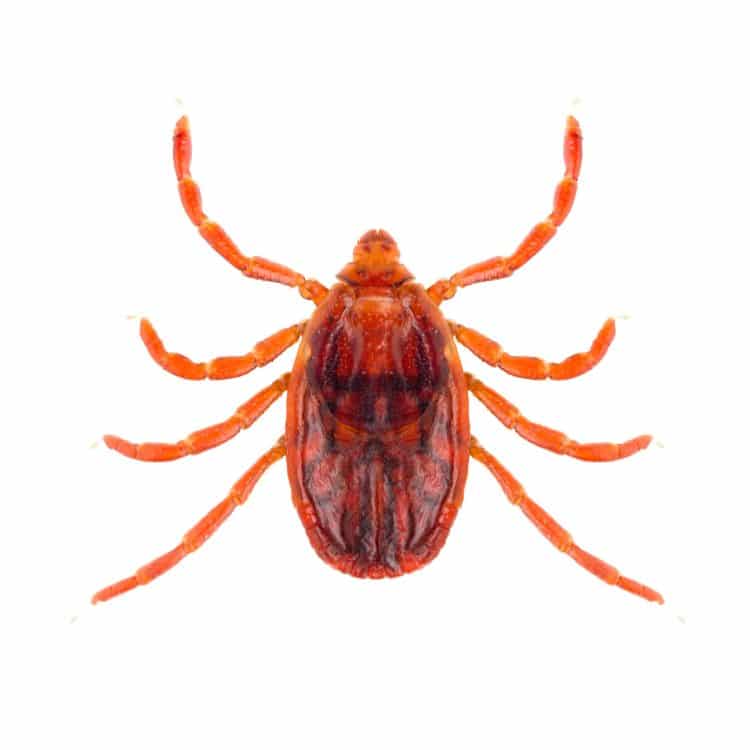The Brown Dog Tick is uniformly reddish brown and is normally an 1/8 of an inch long when it is not engorged with a blood meal. Females have a “shield-like” area that remains unchanged. When a female takes a blood meal her body stretches and changes from red-brown to blue-gray, and her body size increases to half an inch long because she fills up with blood.
Brown dog ticks are not usually known to feed on humans since they are almost exclusively dog parasites. While harmless to humans, these ticks can be annoying and frightening if they are spotted by homeowners on walls or furnishings.
The life cycle of the brown dog tick is similar to that of other tick species. They begin as eggs and develop through larval and nymphal stages prior to maturing into adults. Brown dog ticks are three-host ticks, meaning they drop off the blood host after their meal, before each of their developmental stages. However, if necessary, a brown dog tick may remain with one host throughout its life. Unlike tick species that require plants or soil for “egg laying” female brown dog ticks are capable of laying thousands of eggs on any surface available to them, including animals.
Behavior
- They like to ride on dogs.
- These are usually found deep within the hair of animals; therefore, homeowners may not immediately see them. Sometimes, an infestation may not be recognized until the population grows large and ticks are seen crawling across floors or walls.
- Adult ticks typically imbed themselves into a dog’s ears and between its toes, while larvae and nymphs typically attach to a dog’s back.
- After feeding, the tick usually drops off the host but does not travel far.
- The adult female tick can lay 1,000 – 3,000 eggs after taking a blood meal. Eggs are often laid around baseboards, window and door casings, curtains, furniture, and rug edges. Females can often be seen climbing up walls searching for a place to lay their eggs.
- Adult ticks that have not consumed a blood meal can continue to live for as long as 200 days.
Control and Extermination
Infested homes and kennels should be thoroughly cleaned and treated by pest control experts, like those at United Pest and Turf Control. Their licensed and trained professionals will treat areas where ticks are present or dogs congregate. Indoors, pet bedding and resting areas should be thoroughly vacuumed in an effort to remove most of the ticks. Dogs should be treated by the owner or a groomer with appropriate products the same day that the premises is treated, in order to maximize treatment efforts.
Keep your dog safe. Meet the Brown Dog Tick in North Alabama and Southern Tennessee
Serving North Central Alabama and South Central Tennessee
Limestone County
Ardmore
Home » Keep your dog safe. Meet the Brown Dog Tick


